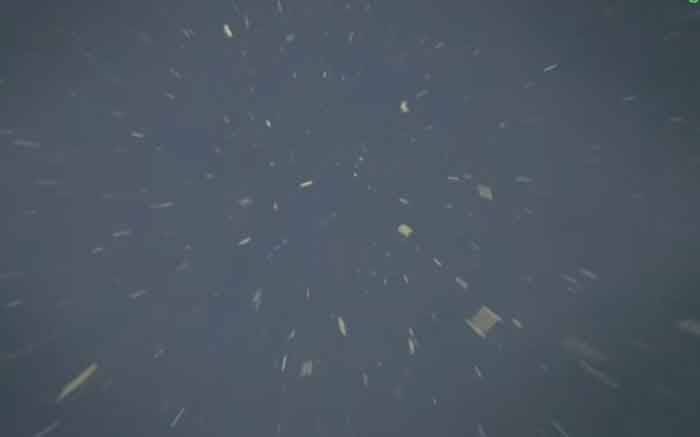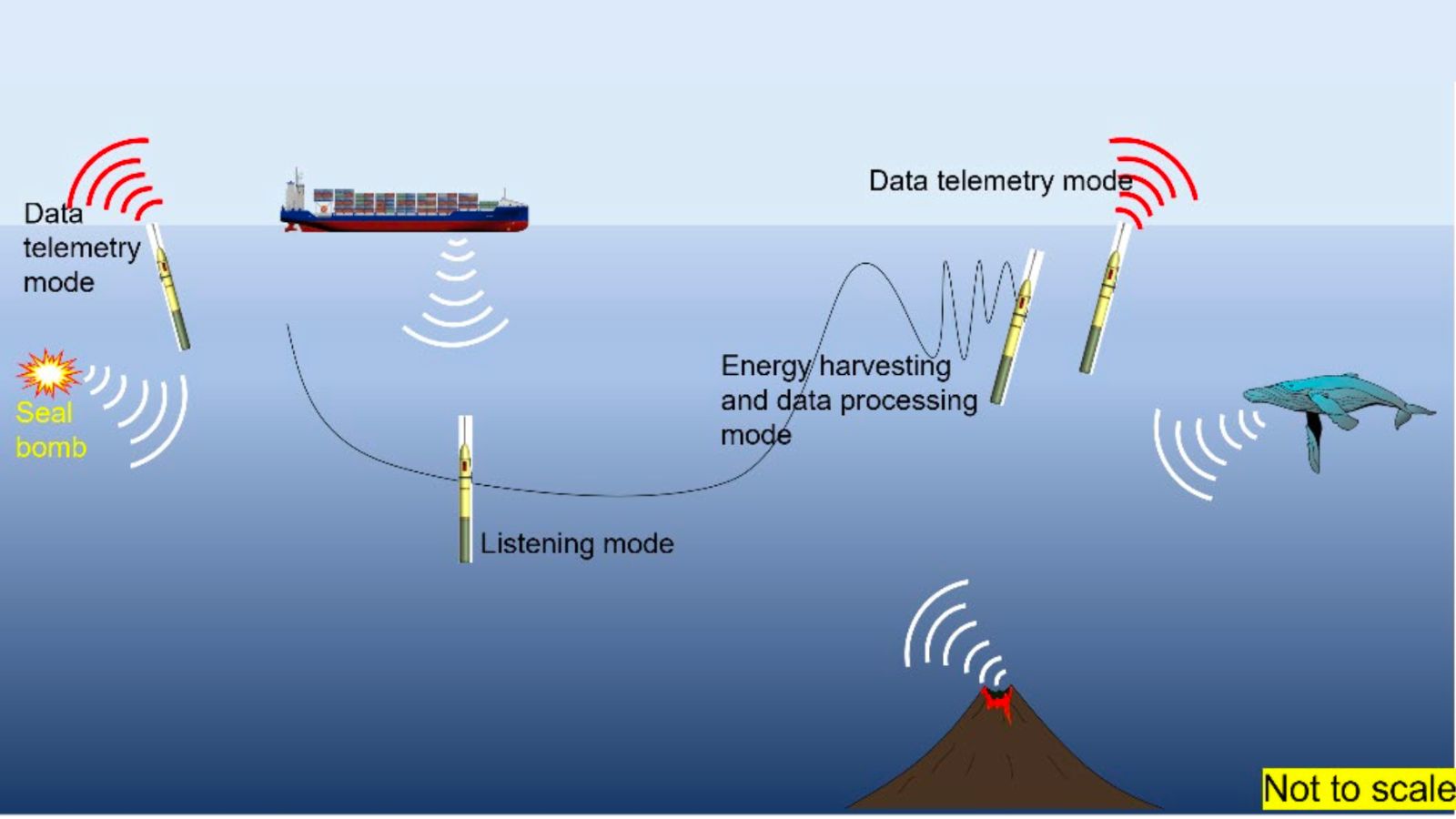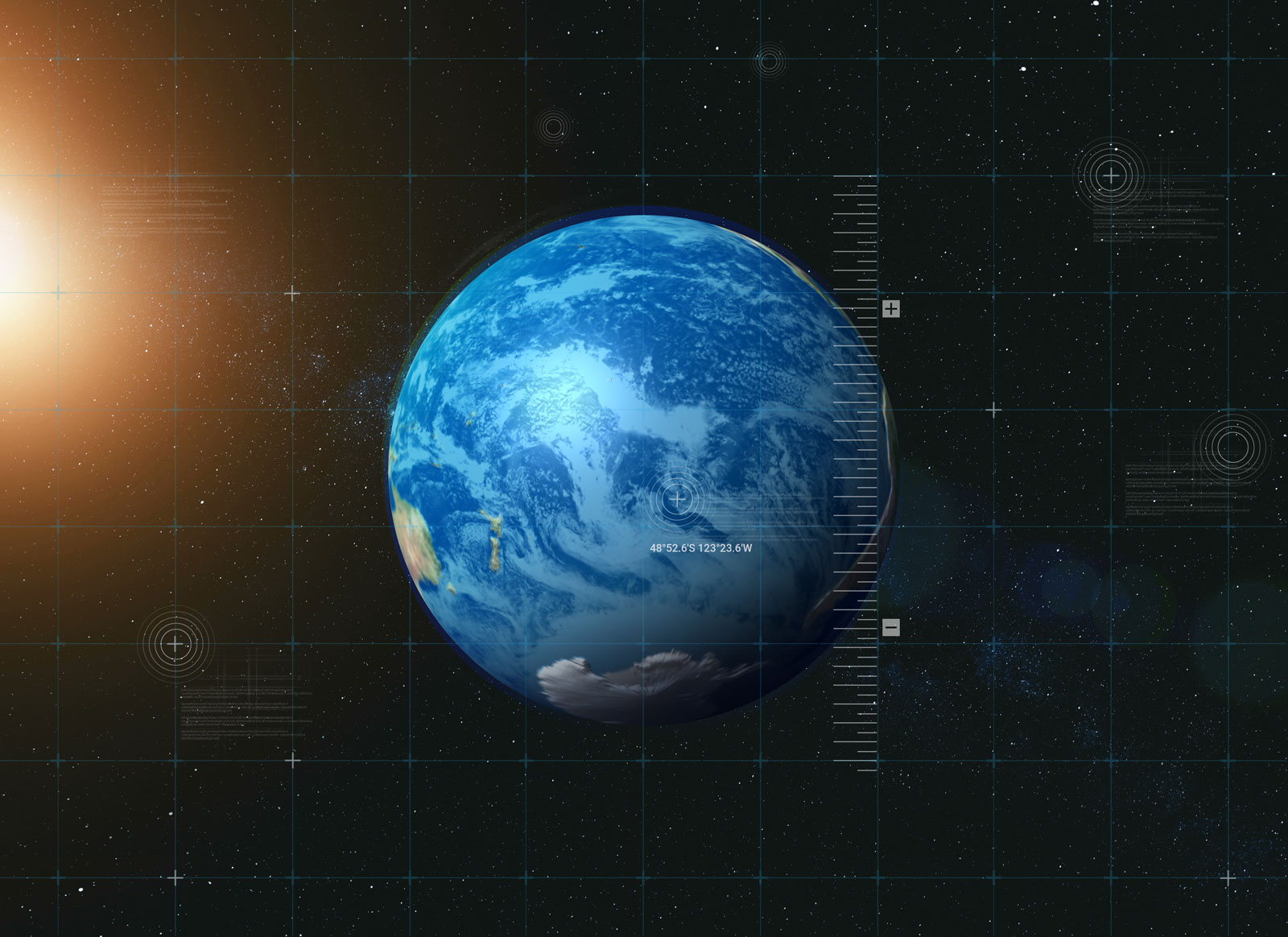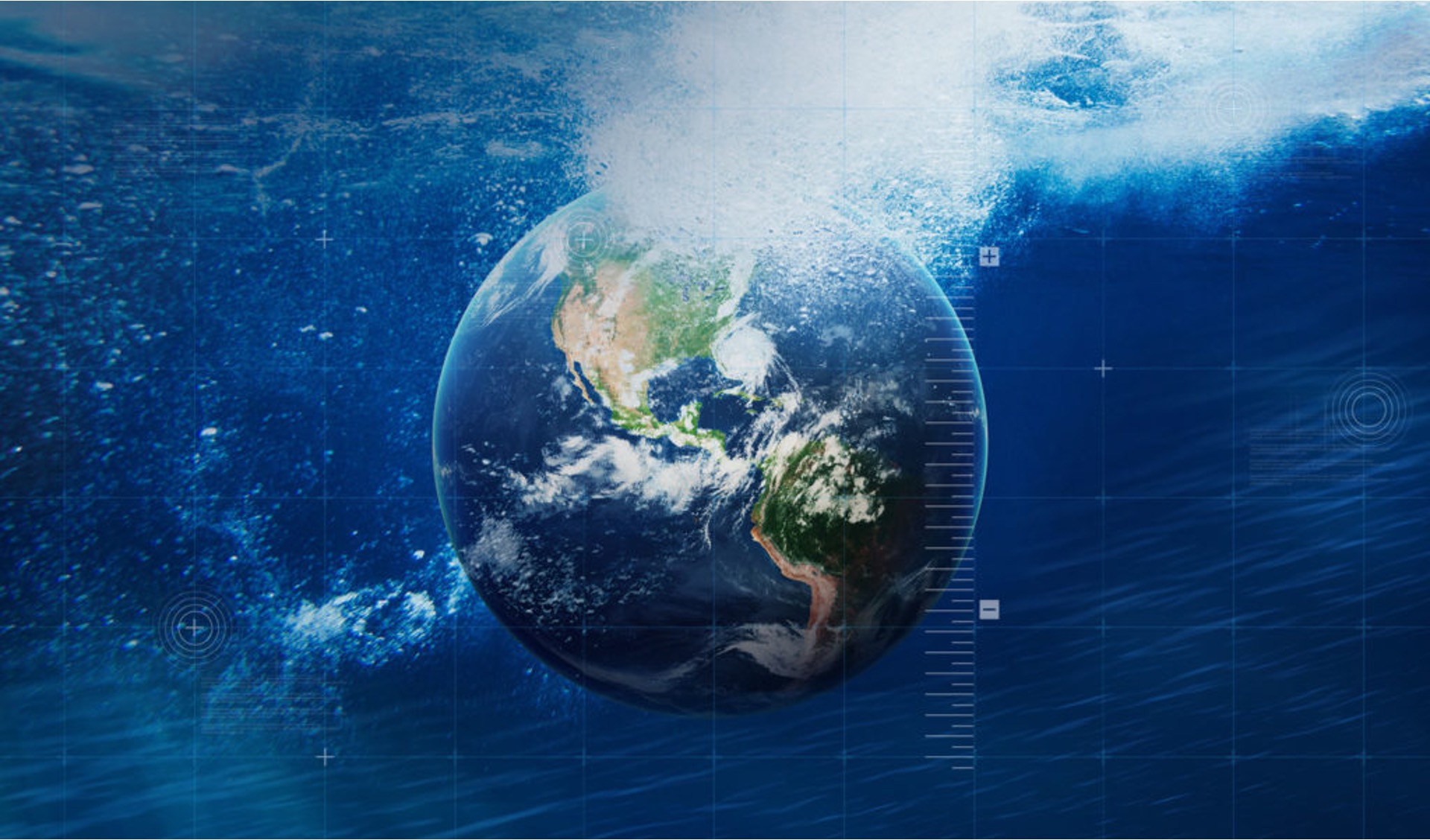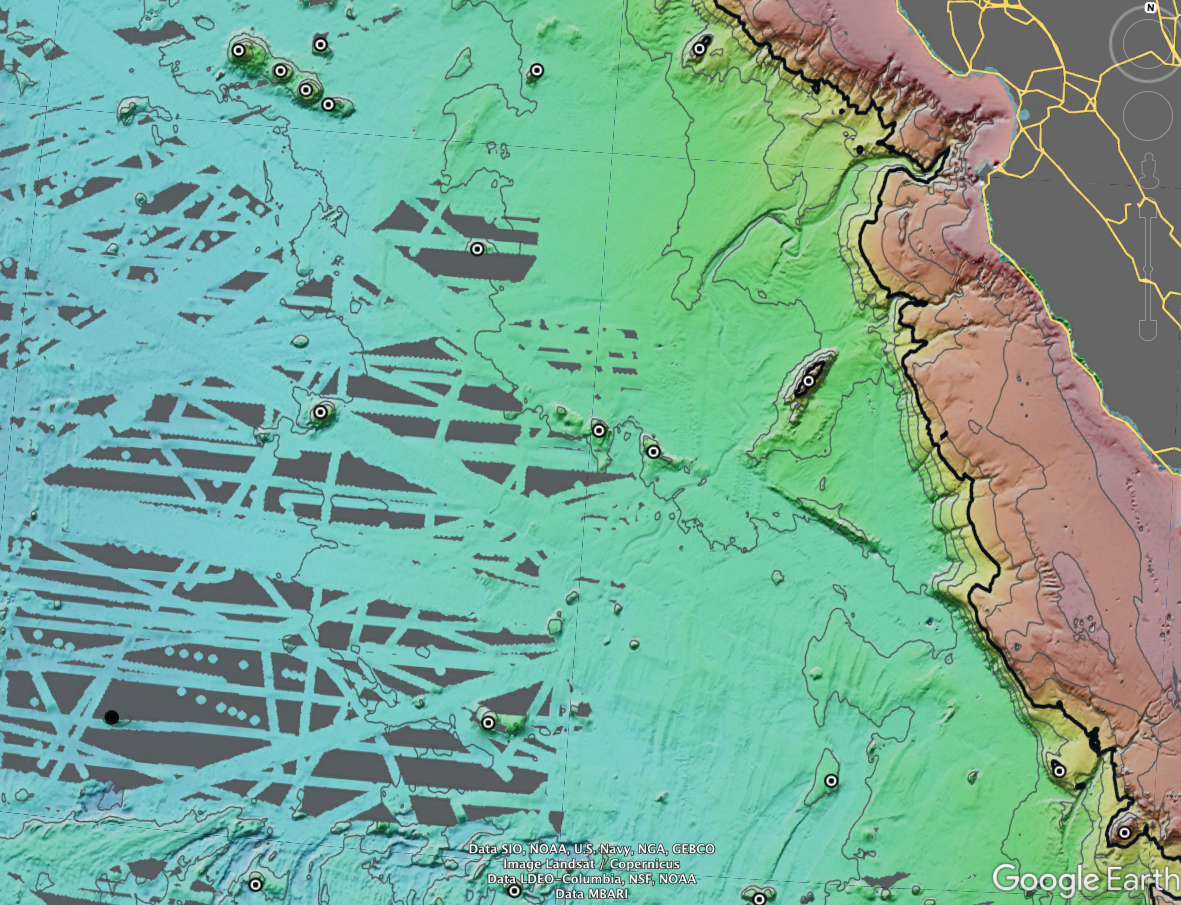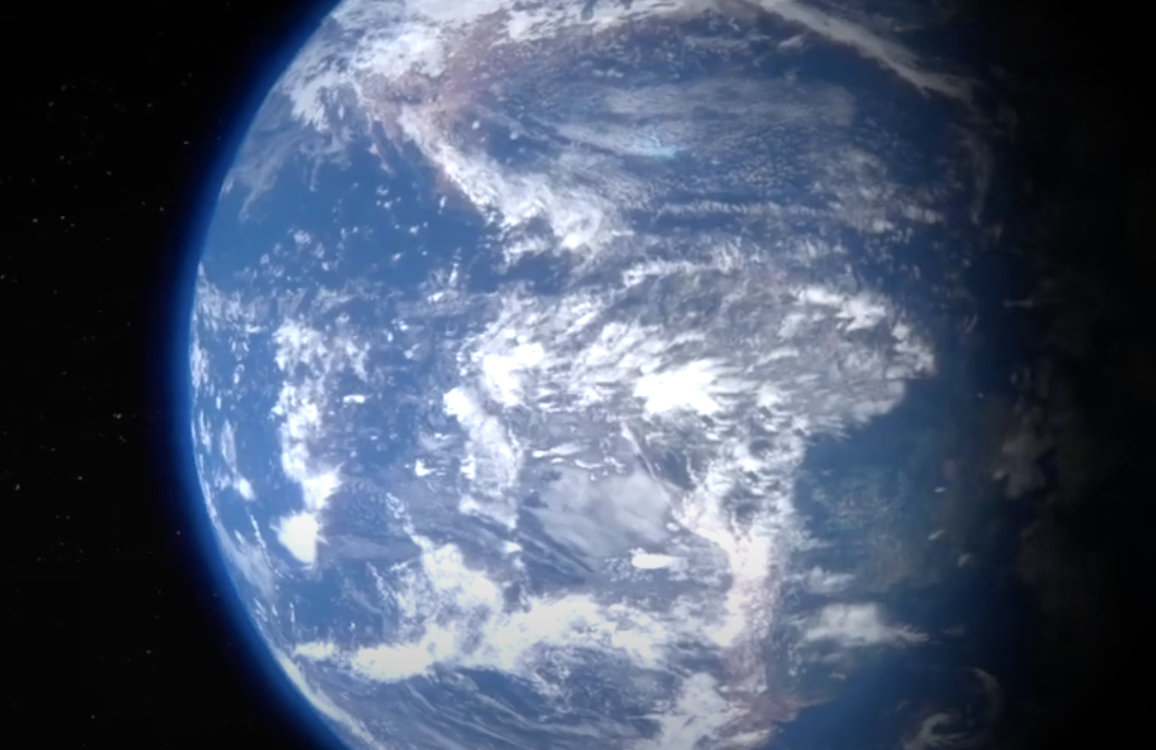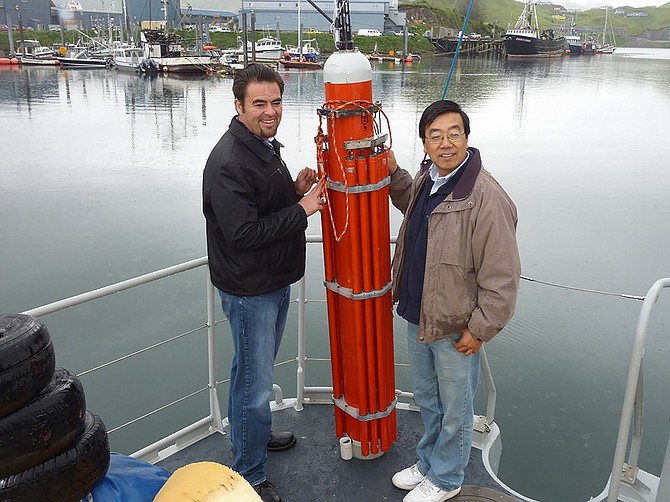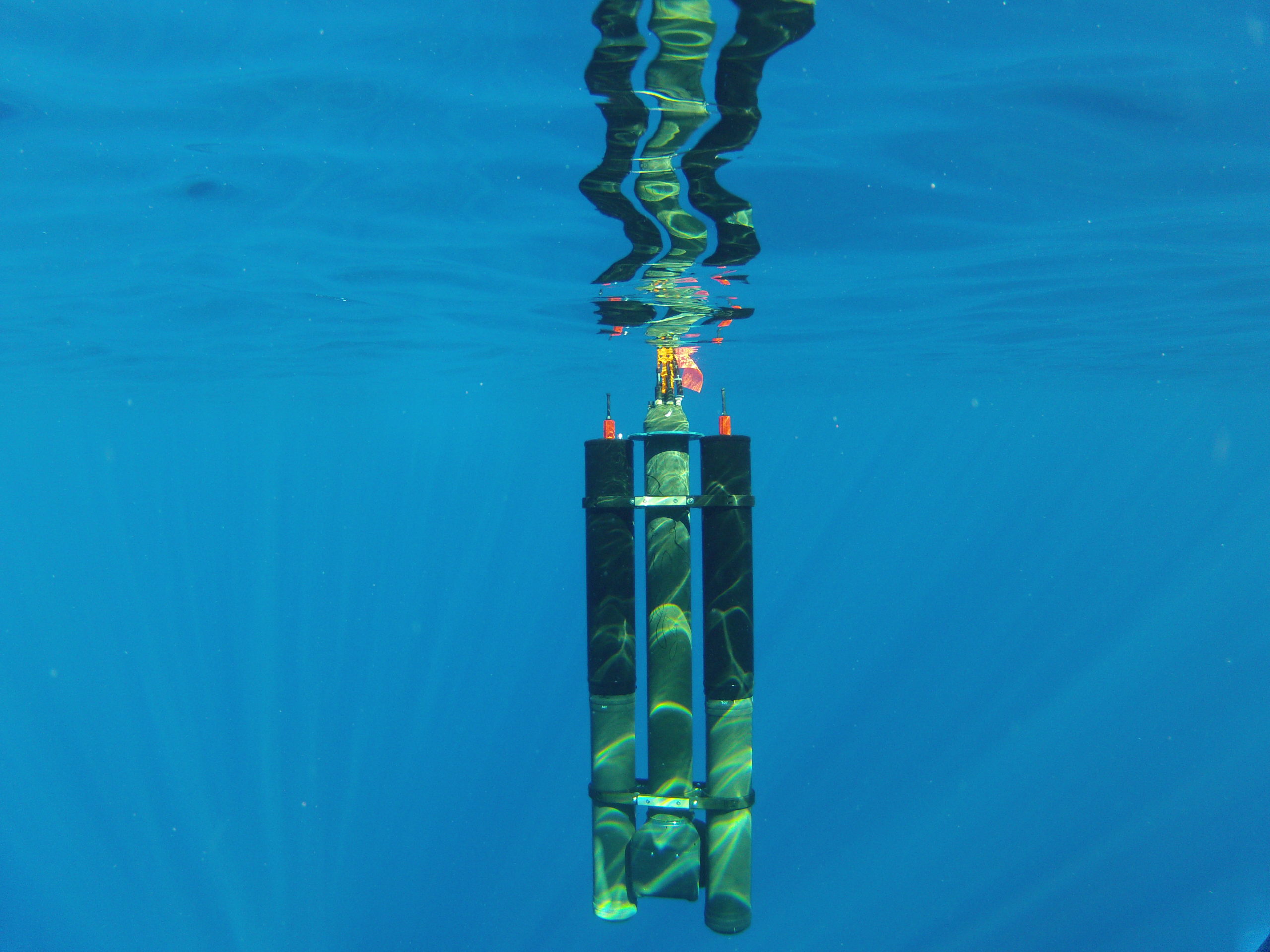Seatrec Partners with Naval Postgraduate School to Study Ocean Soundscape
Seatrec and Naval Postgraduate School Launch a New Project to Study Ocean Soundscape and Chart Impact of Noise Pollution on Ocean Environment
Hydrophone-equipped autonomous float powered by the ocean’s temperature differences will listen for clues to help minimize the impact of human noise
VISTA, Calif., November 14, 2022 - Seatrec and the Naval Postgraduate School (NPS) today launched a new project to study the impact of human-made noise on the ocean soundscape and marine life. An Ocean Sonics hydrophone installed on a Seatrec autonomous sustainably powered float system is the first of its kind and enables acoustic data to be collected anywhere in the world’s oceans nearly indefinitely.
“When it comes to understanding the ocean, sound is everything, but persistent listening is extremely difficult and expensive,” explains Yi Chao, Ph.D., Seatrec’s CEO and Founder. “The Naval Postgraduate School is a great partner, and we are excited to help them research acoustic impacts more effectively and affordably. Providing the necessary scientific instruments that are powered by the ocean’s own temperature differences opens the door to persistent monitoring of our oceans in an economical manner.”
Studies show that noise from humans adversely affects a broad range of organisms including whales, fish, jellyfish, squid and octopuses. High noise levels even contribute to deformities among scallop larvae. However, the true extent of impacts from noise pollution is not well understood.
The emergence of the COVID-19 pandemic in 2020 brought with it unprecedented silence as human activities related to commerce and recreation all but ceased. That reduction in human activity gave scientists a new baseline for ocean noise and highlighted the impact that human noise pollution has on life in the ocean.
“Sound is the way the Navy and many marine animals ‘see’ through the ocean,” says John Joseph, the principal investigator and faculty associate for research at the Naval Postgraduate School. “It’s critical that we understand the reach and scale of the collective human impact on the ocean soundscape to inform strategies for protecting marine species and improving naval operations for the defense of our ships and Sailors at sea.”
The COVID-related silence also offered a powerful argument for broadening the deployment of hydrophones to monitor ocean noise and to include hydrophones on autonomous platforms to provide real-time acoustic data for the dynamic management of vulnerable areas. Underwater gliders have been used in this role and are also used by the Navy for passive surveillance, but they are powered by batteries with a limited lifetime and are usually confined to near the coast.
Traditional hydrophones are positioned at depths around 1,000 meters (3,300 feet), within the SOFAR (SOund Fixing And Ranging) channel, where the sound speed is minimum. Sound is trapped within this SOFAR channel by refraction and can travel slowly over great distances. Hydrophones can be lowered into the SOFAR channel from a ship, which is expensive to operate – often starting at $50,000 per day. They can also be placed on the seafloor and powered by fiber optic cables connected to a shore station on land, but there are only a handful of places with this infrastructure.
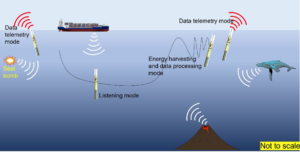 “Our hydrophone float powered by Seatrec’s patented energy harvesting system can be deployed into the SOFAR channel anywhere over the world’s ocean,” said Yi. “It offers nearly unlimited persistent surveillance of the ocean without the need for ship support as the float battery is recharged by the temperature differences in the ocean.”
“Our hydrophone float powered by Seatrec’s patented energy harvesting system can be deployed into the SOFAR channel anywhere over the world’s ocean,” said Yi. “It offers nearly unlimited persistent surveillance of the ocean without the need for ship support as the float battery is recharged by the temperature differences in the ocean.”
Naval forces have an inherent operational reason to be quiet at sea, and the research into ocean noise may provide additional insight for the Navy and Marine Corps in planning for future underway operations.
“Passive acoustic listening has many operational and research applications in the Navy, and our students at NPS conduct applied research to meet naval-unique needs for at-sea operations that require measurements of ambient noise, understanding soundscapes and monitoring of marine mammals,” added Joseph. “Because the Seatrec platform will be long-lived, and is remotely operated, it can provide extensive time series of information to oceanographers and naval researchers to measure acoustics and how they are changing from human impact including climate change.”
This research effort is supported by the Consortium for Robotics and Unmanned Systems Education and Research (CRUSER) at NPS, which is funded by the Office of Naval Research to provide a collaborative environment for the advancement of educational and research endeavors across the Navy and Marine Corps.
This project comes on the heels of Seatrec’s recent launch of Project NEMO – an initiative in partnership with The Nippon Foundation-GEBCO Seabed 2030 Project to install an active acoustic echosounder to Seatrec’s thermally powered float.
About Seatrec
Seatrec designs and manufactures energy harvesting systems that generate electricity from naturally occurring temperature differences in ocean waters. This renewable energy can be used to power deep water oceanographic research equipment such as autonomous profiling floats, resulting in the most scalable, cost-effective deep ocean data collection possible. The company is headquartered in Vista, CA. Visit us at www.seatrec.com and @seatrecinc.
About the Naval Postgraduate School
The Naval Postgraduate School is a defense-focused graduate university offering master’s and doctoral degrees in fields of study core to Naval-unique needs, the U.S. Armed Forces, DOD civilians and international partners. For information, visit: nps.edu.
Media Contact
Sean Yokomizo
sean.yokomizo@seatrec.com
+1 925.878.1200
Click here to read the full press release.
Seatrec and Seabed 2030 Launch Project NEMO, the “Last Great Expedition” to Map Ocean’s Most Remote Spot
Autonomous profiling floats equipped with echosounders will map the ocean near Point Nemo – the farthest point in the ocean from land
VISTA, Calif. – WEBWIRE – Wednesday, March 23, 2022. Seatrec and The Nippon Foundation-GEBCO Seabed 2030 Project today announce Project NEMO (Novel Echosounder to Map the Ocean) via a memorandum of understanding to map the area in the ocean farthest from land near Point Nemo. The project marks one of the last great expeditions to explore the most remote and mysterious area on the planet in the spirit of efforts to chart unknown regions of the Amazon and poles during previous centuries.
“Point Nemo is particularly challenging and expensive to study and map because it’s 2,688 kilometers (1,670 miles) from the nearest land, which makes it emblematic of the difficulties that scientists face in understanding and mapping the ocean as a whole,” explains Yi Chao, Ph.D., CEO and Founder of Seatrec. “Successfully deploying technology that can accurately and inexpensively map the most remote point in the ocean will help us chart a way forward to the world’s first high-resolution map of the seafloor.”
Just over 20% of the seafloor is mapped at high-resolution leaving an area roughly equivalent to the surface of Mars uncharted. Knowledge of the ocean’s topography provides basic information for science, economy, education, management and geopolitics. Applications as diverse as climate modeling, tsunami forecasting, marine protection and management, communication cable and pipeline planning, all require reliable seafloor maps.
Seabed 2030 – a flagship program of the United Nations Decade of Ocean Science for Sustainable Development (2021-2030) – addresses that vital need through an international effort to facilitate the complete mapping of the seafloor by 2030.
“Mapping the seafloor will have a direct impact on the future of our planet, and as a result, that of humanity,” says Jamie McMichael-Philips, Seabed 2030 Project Director. “Cutting-edge technology like Project NEMO is critical to helping us achieve our goal of mapping the seafloor by 2030. ”
Experts estimate that it will cost up to $5B to map the 80% uncharted seafloor using traditional methods such as ships that burn diesel fuel and emit carbon dioxide into the atmosphere. Seatrec’s transformative technology harvests energy from the ocean temperature difference and provides a cost-effective and sustainable solution to deploy a fleet of subsea robots at a fraction of the cost of ships.
Leading Project NEMO is seafloor mapping pioneer Larry Mayer, Professor and Director of the Center for Coastal and Ocean Mapping at the University of New Hampshire.
“The clock is ticking on the international community’s unprecedented effort to map the seafloor so we can understand and protect the ocean’s resources,” emphasizes Mayer. “Next-generation ocean mapping technologies – like Seatrec’s – are vital to getting the data we need in a scalable and cost-effective way.”
About Seatrec
Seatrec designs and manufactures energy harvesting systems that generate electricity from naturally occurring temperature differences in ocean waters. This renewable energy can be used to power deep water oceanographic research equipment such as floats, gliders, and autonomous underwater vehicles, resulting in the most scalable, cost-effective deep ocean data collection possible. Incorporated in 2016 by CEO, Dr. Yi Chao, Seatrec’s technology originated at NASA Jet Propulsion Laboratory, California Institute of Technology, to provide clean power for remote off-grid locations. The company is headquartered in Vista, CA. Visit us at www.seatrec.com and @seatrecinc.
About The Nippon Foundation-GEBCO Seabed 2030 Project
Seabed 2030 is a collaborative project between The Nippon Foundation of Japan and the General Bathymetric Chart of the Oceans (GEBCO). It aims to bring together all available bathymetric data to produce the definitive map of the world ocean floor by 2030 and make it available to all. The project was launched at the United Nations (UN) Ocean Conference in June 2017 and is aligned with the UN’s Sustainable Development Goal #14 to conserve and sustainably use the oceans, seas and marine resources. For information visit: seabed2030.org.
Media contacts
Sean Yokomizo
Seatrec
sean.yokomizo@seatrec.com
+1 925.878.1200
Pegah Souri
Seabed 2030
pegah@raittorr.co.uk
+44 (0)7951 581707
###
Seatrec Launches Initiative to Boost Cost-Effective Seafloor Mapping
Seatrec Launches Initiative to Boost Cost-Effective Seafloor Mapping by Developing Autonomous Echosounder Float Powered by Ocean’s Temperature Differences
Project funded by Schmidt Marine Technology Partners brings seafloor mapping dream team together with transformative and sustainable tech to map the 80% of ocean bottom still uncharted at high-resolution
VISTA, Calif. (Oct. 27, 2021) – Seatrec, a renewable energy company that harvests energy from temperature differences in the environment, today launches a project to develop an autonomous echosounder float powered by clean, sustainable energy. With funding from Schmidt Marine Technology Partners, a program of the Schmidt Family Foundation founded by Wendy and Eric Schmidt, Seatrec will provide the float and power system while New Hampshire-based Airmar Technology Corporation, in collaboration with Innomar Technologie GmbH based in Germany, will provide the active acoustic echosounder for high-resolution mapping.
“Eighty percent of the seafloor has not been mapped at high-resolution - an area roughly twice the size of Mars - and covering an area that large using ships and today’s state-of-the-art autonomous platforms will cost billions of dollars,” explains Yi Chao, CEO and Founder of Seatrec. “This initiative brings together a seafloor mapping dream team with the transformative technology needed to create a sustainably powered method for mapping the ocean floor for a fraction of the cost compared to ships.”
The project is led by Larry Mayer, a professor and Director of the Center for Coastal and Ocean Mapping at the University of New Hampshire.
“The ocean’s resources are critical to supporting and sustaining all life on Earth and it’s shocking how little we know about something as fundamental as the seafloor,” observes Mayer. “It’s imperative that we develop the next generation of ocean mapping technologies to support the international community’s unprecedented effort to finally map the seafloor at high-resolution -- there’s no time to lose.”
Indeed, the world is racing to map the seafloor to help manage living resources, improve marine navigation, and guide infrastructure construction, as well as better defining the impacts of current and future human activity. The Nippon Foundation-GEBCO Seabed 2030 Project is a first-of-its-kind international effort to facilitate the complete mapping of the seafloor by 2030 and is a major contribution to the UN Decade of Ocean Science for Sustainable Development (2021-2030).
However, two critical obstacles stand in the way of success: energy and cost.
Mapping the 80% gaps of the global seafloor will cost an estimated $3B using ships burning diesel fuel and emitting carbon dioxide into the atmosphere. A robotic revolution resulted in the growing use of autonomous vehicles to reduce the cost of using ships and the associated carbon footprint. Seatrec’s technology to harvest energy from the ocean thermal energy is transformative and provides a cost-effective and sustainable solution to deploy a fleet of subsea robots at a fraction of the cost of ships.
“Mapping the seafloor provides fundamental and critical data we need to protect the health of our oceans but such a massive undertaking requires innovative and sustainable solutions from the best and brightest,” points out Erika Montague, the Chief Technologist of the Schmidt Marine Technology Partners. “This initiative provides a path forward towards better understanding and protection of our ocean.”
About Seatrec
Seatrec designs and manufactures energy harvesting systems that generate electricity from naturally occurring temperature differences in ocean waters. This renewable energy can be used to power deep water oceanographic research equipment such as floats, gliders, and Autonomous Underwater Vehicles (AUVs), resulting in the most scalable, cost-effective deep ocean data collection possible. Incorporated in 2016 by CEO, Dr. Yi Chao, Seatrec’s technology originated at NASA Jet Propulsion Laboratory, California Institute of Technology, to provide clean power for remote off-grid locations. The company is headquartered in Vista, CA. Visit us at www.seatrec.com and @seatrecinc.
Media contact
Sean Yokomizo
+1 925.878.1200
EarthSci Show with Aryan Shah and Yi Chao
In this episode of the EarthSci Show, host Aryan Shah and our CEO Dr. Yi Chao, discuss the dynamics of seafloor mapping, what Seatrec does to accelerate such a process, and where he envisions Ocean Exploration and Blue technology in the decades to come.
Check out the podcast and watch the video on Youtube.

